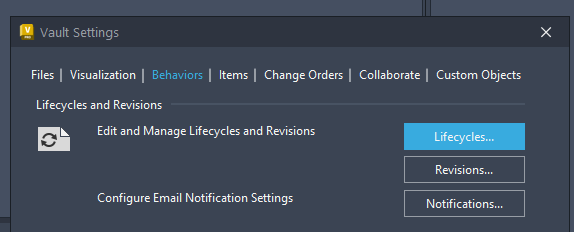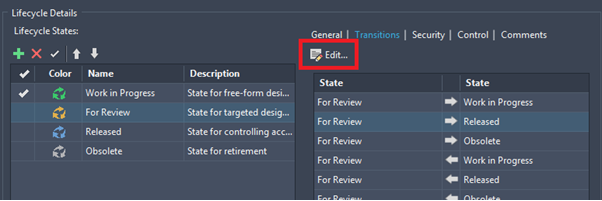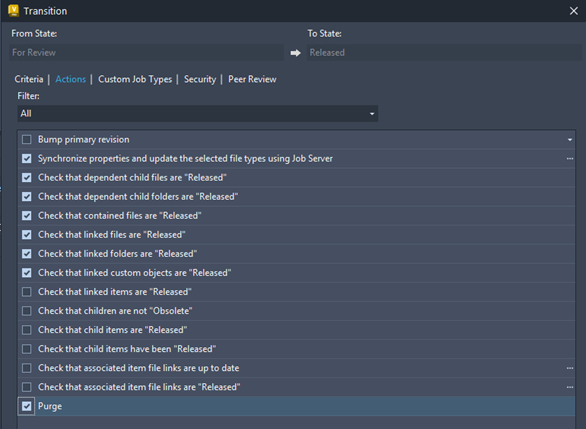Autodesk Vault often serves as the backbone of a modern drawing office, providing essential lifecycles management functionality to ensure consistency, process management and automation for design data. However, every check-in, lifecycle change and file update, generates a new version of that file. Over time, this can result in a significant accumulation of historical file versions, leading to bloated SQL databases and file stores, and often necessitating a costly upgrade to an SQL Standard license.
The Challenge of Managing File Version in Autodesk Vault
Traditionally, Autodesk Vault has offered two primary methods for managing and purging unnecessary file versions:
- Manual Purging: Selecting and processing files individually through a menu. This method is tedious and impractical for busy drawing offices where large volumes of data are created daily.
- Vault-Wide Purging: Executed through scripts or manual selection, using the task scheduler. While more automated, many companies lack the configuration for this method and are hesitant to purge entire vaults regularly.
The 2025 Solution: Purging Files via Lifecycle Transitions
With the 2025 improvements to Vault Professional, Autodesk has introduces the ability to purge files directly through lifecycle transitions. In Vault, each file progresses through various lifecycle states – such as ‘Work in Progress’, ‘Review’ and ‘Released’ – reflecting its current phase in the development process. Administrators can now define purge settings for each of these states, specifying which file versions are retained or removed during a purge operation.
For instance, in the ‘Work in Progress’ state, you might choose to keep only the first and last versions of a file, while in the ‘Released’ state, all versions could be preserved to maintain a complete history.
Benefits of Purging Files through Lifecycle Transitions
- Optimised Storage Management: Vault accumulates multiple versions of files over time, consuming significant storage space. Configuring purge settings within lifecycle states allows organisations to automatically remove unnecessary version, ensuring efficient use of storage resources.
- Enhanced System Performance: Reducing stored file versions improves system performance, making tasks such as backups, migrations and restorations faster and more efficient, thereby enhancing overall productivity.
- Automated Data Management: Integrating purge actions with lifecycle transitions automated data management processes. With Vault 2025, administrators can configure a ‘Purge’ action within the lifecycle transition’s ‘Actions’ list, ensuring that unnecessary versions are removed as files advance through their lifecycle stages.
- Customised Version Retention: Vault offers flexible purge preferences, based on the importance of different lifecycle states. Administrators can set retention policies, such as keeping all versions, only the first and last, or solely the last version, aligning with organisational needs and compliance requirements.
How to Implement Purging Files with Lifecycle Transitions
- Ensure that your Lifecycle State Controls are Configured
Navigate to Tools > Administrations > Vault Settings > Behaviours Tab > Lifecycles

Select the lifecycle you wish to implement purging on. For each state in the lifecycle, set the controlled versions of the files you wish to keep. For example, in ‘Work in Progress’, you probably want to keep the first and last version as controlled versions but for a ‘Released’ state, you want to ensure that all versions are kept and none are purged.

- Configure Purging in Transitions
Edit each transition where you want to a purge to occur. (Any state moving into the released state would be a good candidate).

In the actions tab, ensure that purge is ticked:

Conclusion
Integrating purge functions within lifecycle transitions in Autodesk Vault, empowers organisations to manage their data more effectively. By automating version control and aligning retention policies with lifecycle stages, companies can optimise storage, enhance system performance and maintain organised data repositories, contributing to a more efficient and streamlined workflow. If your Vault needs a tune up, get in touch with us to discuss how one of our Vault engineers can help you to get your Vault running smoothly.
For more information on this blog post, or if you have any other questions/requirements, please complete the below form:


